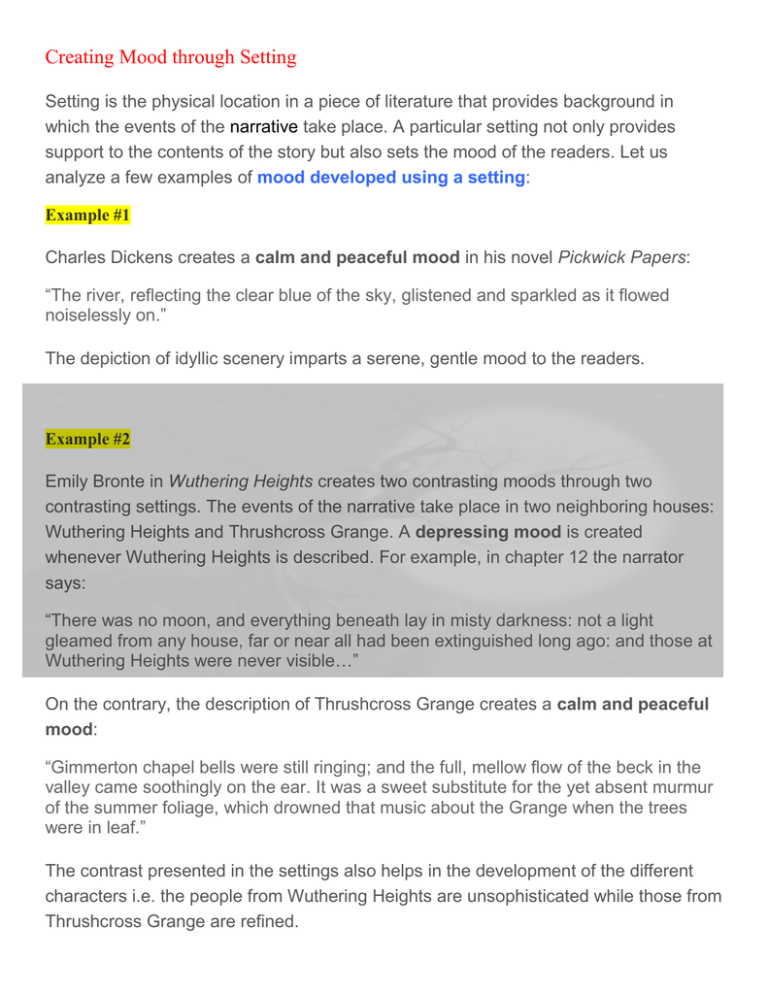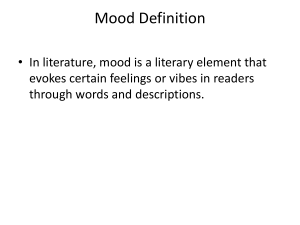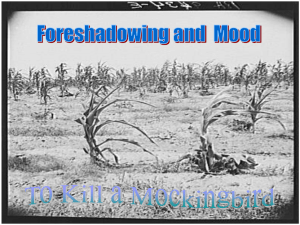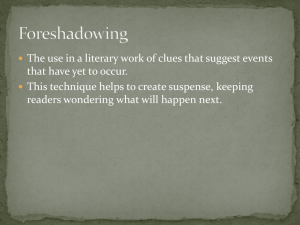MOOD in writing - GAB Graphic Works
advertisement

Creating Mood through Setting Setting is the physical location in a piece of literature that provides background in which the events of the narrative take place. A particular setting not only provides support to the contents of the story but also sets the mood of the readers. Let us analyze a few examples of mood developed using a setting: Example #1 Charles Dickens creates a calm and peaceful mood in his novel Pickwick Papers: “The river, reflecting the clear blue of the sky, glistened and sparkled as it flowed noiselessly on.” The depiction of idyllic scenery imparts a serene, gentle mood to the readers. Example #2 Emily Bronte in Wuthering Heights creates two contrasting moods through two contrasting settings. The events of the narrative take place in two neighboring houses: Wuthering Heights and Thrushcross Grange. A depressing mood is created whenever Wuthering Heights is described. For example, in chapter 12 the narrator says: “There was no moon, and everything beneath lay in misty darkness: not a light gleamed from any house, far or near all had been extinguished long ago: and those at Wuthering Heights were never visible…” On the contrary, the description of Thrushcross Grange creates a calm and peaceful mood: “Gimmerton chapel bells were still ringing; and the full, mellow flow of the beck in the valley came soothingly on the ear. It was a sweet substitute for the yet absent murmur of the summer foliage, which drowned that music about the Grange when the trees were in leaf.” The contrast presented in the settings also helps in the development of the different characters i.e. the people from Wuthering Heights are unsophisticated while those from Thrushcross Grange are refined. Creating Mood through Diction Diction is the choice of words a writer uses. Diction or choice of words conveys deep feelings as well as depicts the events, places and characters in a literary work in specific colors, having an effect on the way the readers feel about them. Example #4 The following lines from Jonathon Swift’s “Gulliver’s Travel” is one of the great mood examples created using diction: “And being no stranger to the art of war, I gave him a description of cannons, culverins, muskets, carbines, pistols, bullets, powder, swords, bayonets, battles, sieges, retreats, attacks, undermines, countermines, bombardments, sea-fights…” In order to create feelings of disgust in readers for the destructive consequences of war, the writer chooses words that are unmelodious, harsh and jarring. The diction in the above passage corresponds with the subject matter. WHY DO IT? Function of Mood Mood helps in creating an atmosphere in a literary work by means of setting, theme, diction and tone. If done successfully, can produce emotional responses in readers and creates an emotional connection to the piece they read. Once the readers are emotionally invested, they “get” the message that the writer tries to convey to them.







